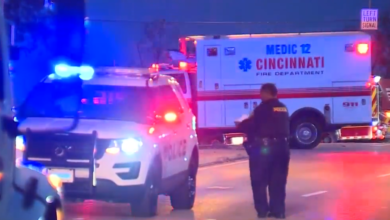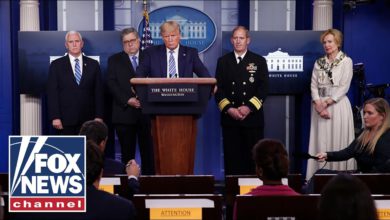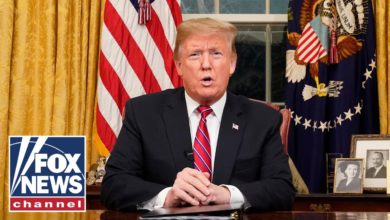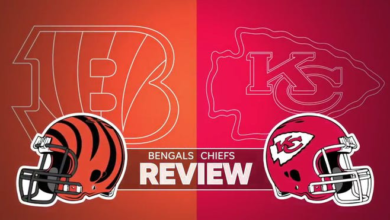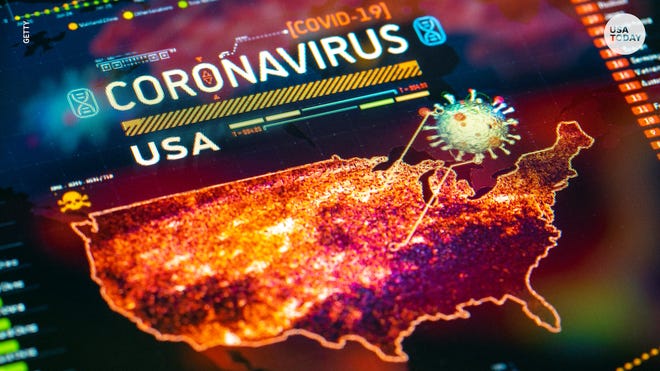
Thursday marks the end of the public health emergency in the United States, more than three years after it was first declared to combat the novel coronavirus by unlocking powerful tools to detect and contain the emerging threat.
While it closes a chapter in history, health experts point out the COVID-19 pandemic is not yet over as the virus continues to claim about 1,000 lives each week, according to the Centers for Disease Control and Prevention. To date, more than 1.1 million people in the country have died.
“There’s no real mechanism to declare an end to the pandemic, but it is an end to the emergency phase, both in the U.S. and globally,” said Crystal Watson, associate professor at John Hopkins Bloomberg School of Public Health.
Variants of the virus continue to appear, causing increases in hospitalizations and deaths across the country, Watson said. But widespread immunity through infection and vaccines has protected most Americans from developing severe disease.
More:Why travelers with disabilities worry about Biden's end to COVID public health emergency
From the archivesA timeline of how COVID unfolded in the US over the first 5 months
Latest:A new COVID variant called Arcturus is linked to pink eye
The end of the public health emergency also marks significant changes to the COVID-19 response that could affect testing and treatment, vaccines, data reporting, health coverage and telemedicine. Here's what that will look like.
What's happening with COVID testing
Consumers can still order free home tests through COVIDtests.gov, but access might change because the Biden administration has paused buying tests and supply may be limited.
- Medicaid: Free tests are available until Sept. 30, 2024; state Medicaid programs will decide whether to continue coverage after that.
- Medicare: Enrollees will no longer receive free at-home tests, but lab tests are covered.
- Private insurers: They are no longer required to pay for eight home tests a month. Consumers should check with their insurer about access because coverage varies by state and insurance company.
- Uninsured: Testing may be available through pharmacies and community-based sites under a CDC program.
“We have encouraged a lot of individuals to do over-the-counter testing at home," said Dr. Tochi Iroku-Malize, president of the American Academy of Family Physicians. “But that’s no longer going to be free for many patients."
Polymerase chain reaction tests – known as PCR tests – are considered the gold standard for detecting the COVID-19 virus, health experts say. But they may cost up to $100 if not covered by insurance, Jodie Guest, professor and vice chair of the department of epidemiology at Emory University’s Rollins School of Public Health, told USA TODAY in February.
Quest Diagnostics, one of the largest lab companies in the country, said labs will continue to provide COVID-19 services and tests, but “access to, fees and reimbursement for COVID-19 testing will change after the (public health emergency) expires.”
The end of the emergency declaration could affect the nation's ability to test and produce quick results during a surge, Iroku-Malize said. A lack of testing could delay early treatment and cause more patients to seek help from providers, overwhelming the health care system.
"When (a surge) happens, that means that the demand is going to be greater for these tests," she said. "With this PHE ending, that may be a barrier for a certain number of clinicians to even have the resources available to manage a surge."
Vaccines news:Why the White House is investing $5 billion in next-generation COVID vaccines
What's happening with COVID vaccines
Vaccine prices are expected to rise significantly to about $100 a dose, said Brent Ewig, chief policy and government relations officer at the Association of Immunization Managers.
But “the good news is 9 out of 10 Americans now have coverage for vaccines with no cost sharing,” he said, partly because of a number of federal programs.
Here's what vaccine coverage looks like based on coverage:
- Medicaid: COVID-19 vaccinations will be covered without a co-pay or cost sharing through Sept. 30, 2024. Medicaid "will generally cover" vaccines that are recommended by the Advisory Committee on Immunization Practices, the U.S. Department of Health and Human Services said.
- Medicare: Vaccines are covered under Medicare Part B without cost sharing.
- Private insurers: COVID-19 vaccines recommended by the immunization committee are considered a preventative health service and should be fully covered without a co-pay when using an in-network provider.
- Uninsured: Free vaccines may be available through the Bridge Program, announced by HHS on April 18, which maintains broad access to COVID-19 vaccines and treatment for uninsured Americans.
Health experts are concerned the public health emergency may mark an end to interest and investment in creating and modifying better vaccines, especially as the demand for the COVID-19 booster remains low.
"One of the things that allowed Operation Warp Speed to be so successful was that there was a huge potential payoff for manufacturers on the back side of that," said Dr. Mario Ramirez, emergency medicine physician and managing director of Opportunity Labs, a national nonprofit research and consulting firm. "We've got to find a way to keep that same financial system in place if we're going to continue to push innovation for whatever the next threat is."
There are at least 500 coronaviruses:Experts say wee must develop next-gen vaccines now - before it's too late
Experts also are concerned infrastructure that helped reduce health equity gaps, like relationships with community leaders, may be lost when the public health emergency expires – possibly reversing the unprecedented progress made during the vaccination campaign.
"It's like you built up a bunch of Navy battleships to go out and win this one battle against COVID, and now we're going to bring them back to port and dismantle them and mothball them only to have to rebuild them in the next emergency," Ewig said. "And it just doesn't make sense."
Millions may lose health coverage
In addition to costs for tests, vaccinations and treatment shifting to insurers and consumers, about 15 million Americans who gained Medicaid health insurance during the pandemic are at risk of losing coverage this year as generous federal subsidies end. Medicaid is the government's insurance program for low-income and disabled residents.
The federal government provided billions in aid to states on the condition that they would not remove people from Medicaid until the public health emergency ended. That drove down the uninsured rate to 8%.
The Biden administration said states can take up to one year to complete eligibility checks for Medicaid. Arkansas, Arizona, Idaho, New Hampshire and South Dakota began terminating Medicaid coverage last month.
Consumers who lose Medicaid coverage can sign up for Affordable Care Act coverage during a special enrollment period.
As COVID emergency ends:Some fear states will mistakenly end Medicaid coverage for millions of eligible people
CDC changes how it reports COVID data
As the public health emergency ends, the CDC will no longer have the legal authority to require all labs to report coronavirus testing results. Some states also will lose their legal authority to collect such case data, said Dr. Brendan Jackson, lead of the CDC’s COVID-19 response.
Officials said cases have become harder to track as home testing has become so prolific. People with mild or asymptomatic cases who use rapid COVID-19 home tests often don't report results to their doctor or local public health department. That means public officials don't have accurate case counts.
Reporting COVID data is about to change:Here's what you need to know.
COVID-19 data will now be tracked through:
- Hospitals, which must report the number of COVID-19-positive patients who visit emergency rooms or are admitted to the facility.
- Wastewater monitoring, which the CDC will use to track the virus in hundreds of communities that are home to nearly 140 million people.
- Labs, which track COVID-19 positivity rates − a measure of how often test are positive − that is considered a key indicator of the virus' reach in a community. The CDC will rely on voluntary reporting from a network of more than 450 labs nationwide that track respiratory viruses.
The public will be able to view the new COVID-19 data tracker and see levels of hospitalization and death in their community. Those figures will be updated weekly at data.cdc.gov.
Pandemic's rules for telehealth have been extended
Millions of Americans sought remote care through telehealth during the early months of the pandemic when doctor and clinics limited in-person visits. The public health emergency enabled that by easing restrictions that telehealth officials say prevented widespread adoption of the technology.
Congress extended those Medicare policies until the end of 2024, which means most Americans will still have access to telehealth services.
"Those flexibilities are largely going to be left intact after Thursday," said Kyle Zebley, the American Telemedicine Association's senior vice president of public policy.
Meanwhile, the Drug Enforcement Administration has extended a pandemic-era policy until Nov. 11 that allows telemedicine doctors to prescribe controlled substances such as buprenorphine and Adderall without an in-person medical appointment. Under the temporary rule, patients and prescribers with a relationship as of Nov. 11 will be able to get remote prescriptions through Nov. 11, 2024.
The DEA initially sought to require people to visit a doctor or clinic within 30 days of getting a telehealth prescription for a controlled substance. But the proposal to rein in the pandemic-era policy generated more than 38,000 public comments.
Follow Adrianna Rodriguez and Ken Alltucker on Twitter: @AdriannaUSAT @kalltucker
Health and patient safety coverage at USA TODAY is made possible in part by a grant from the Masimo Foundation for Ethics, Innovation and Competition in Healthcare. The Masimo Foundation does not provide editorial input.
Source link

